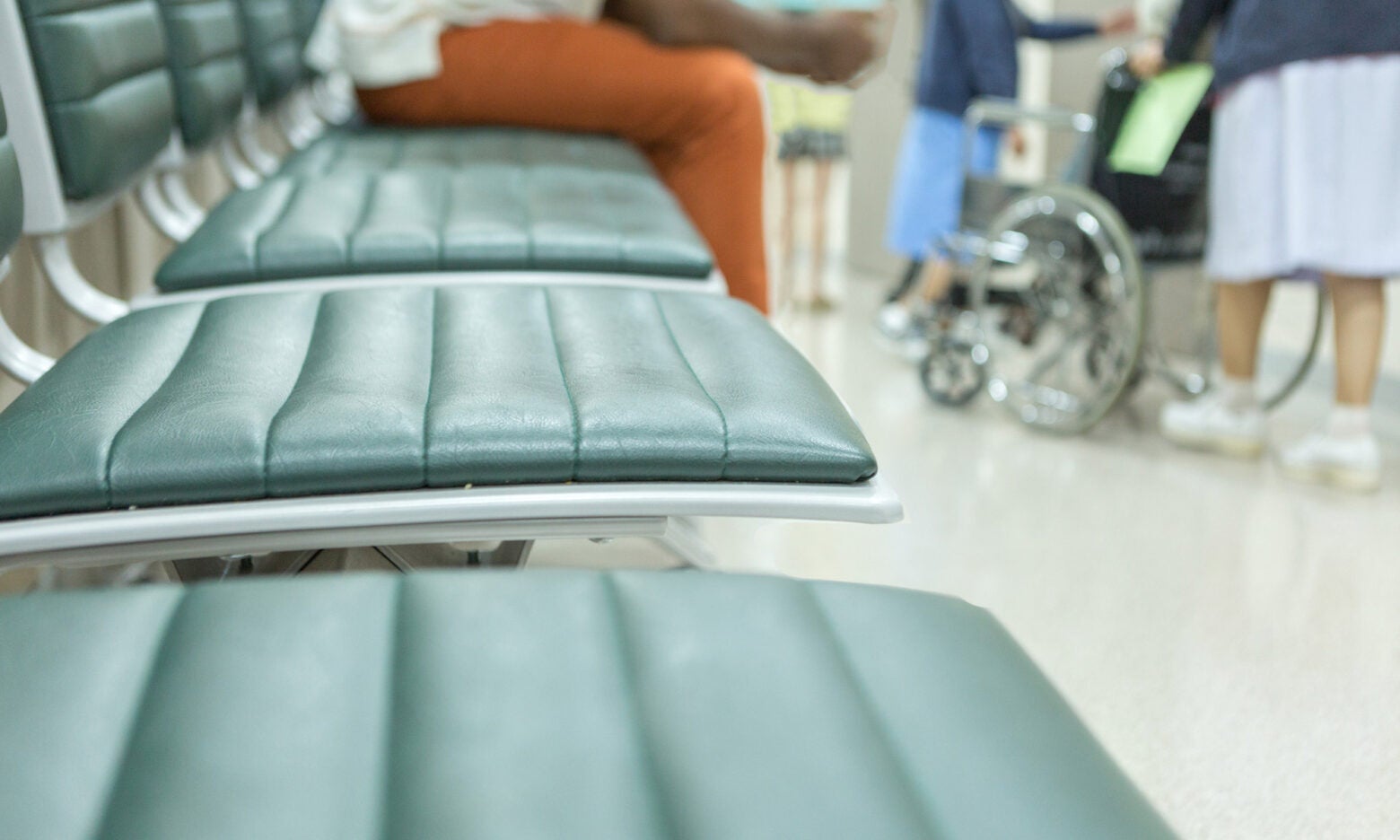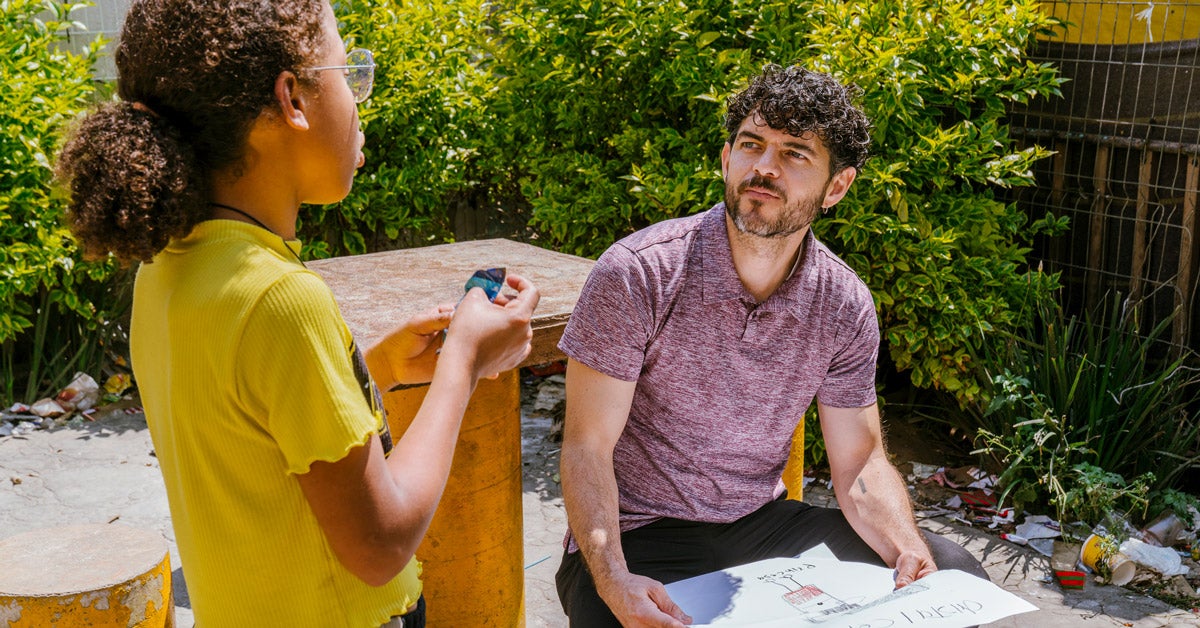
Opinion
Hospitals can better help suicidal teens in the emergency room
This article is part of Public Health in Action, a series from Harvard Public Health and The Studio that examines mental health programs across the U.S. that produce results.
In the late 1990s, when I was the director of emergency psychiatry at Boston’s Children’s Hospital, I became concerned about what was then a new problem: a huge increase in the number of suicidal adolescents coming to the emergency department who needed inpatient psychiatric treatment and for whom we had no beds—not just at Children’s, but anywhere in the region. They would wait in the halls, in exam rooms—wherever we could find space for them. Sometimes they waited for hours; other times, for days and weeks—a phenomenon we now call “boarding.” Then as now, lingering in the hospital was not good for the patients. And yet it continues: A 2020 study in the journal Pediatrics found that close to three in every five patients who sought mental health treatment at emergency rooms were boarded.
Keep up with the series
I also noticed that the kids who most needed help—in particular, suicidal adolescents—often had to wait the longest for beds. Whenever I called hospitals to ask if they could take any of our boarding patients (a common practice), they didn’t say, “Send over the kids most in need of care.” Instead, they took the patients who were the least acute—because those patients would be the least strain on the hospital staff.
In emergency medicine, there is a concept called “triage,” in which the most acute patients get the most rapid and intensive care. For our most acute patients, suicidal adolescents, the opposite was happening: They had to sit and wait for care. I called this “reverse triage.” And I had the idea of trying to do some crisis intervention with these suicidal patients and their families.

Eventually, I developed a modular intervention, designed to be carried out in any emergency department with trained mental health clinicians. The intervention equips kids and their families with education about depression and suicide; helps them identify and develop coping skills; and aims to improve communication between parents and their child—all of which allows them to return home safely.
I called this Family Based Crisis Intervention, or FBCI. A critical part of FBCI is that every part of the intervention is done with both the adolescent and the parent. This way, the parent knows what to do if the child struggles after returning home. The parent becomes the child’s mental health coach.
An important part of FBCI is helping teens and their families come to what we call the “joint crisis narrative”—a mutual understanding of what led to the crisis. Usually, an adolescent’s story about what happened is different from the parents’ story: The teen will say, “I wanted to kill myself because my boyfriend dumped me.” And the parents will say, “We didn’t even know you had a boyfriend.” The adolescent will reply, “I never told you he was my boyfriend because you hate him.” So you have to help both sides communicate and understand each other better. And you also have to help the adolescent understand that the parents might seem angry because they’re so worried, or they’re fearful for the child’s safety.
It’s also important to teach some cognitive-behavioral skills—like how to recognize when you’re engaging in all-or-nothing thinking and how to distract yourself from negative thoughts. So if a teen says, “I don’t want to live anymore because my boyfriend dumped me,” that’s an example of all-or-nothing thinking. You work with patients to challenge that idea, asking them if ending their life really seems like a good solution to feeling bad over the break-up. At home, parents can do things like ask about activities that might take a child’s mind off of what happened, like walking the dog, or watching a movie, or being with friends—all of those things can help.
Another crucial element of FBCI is developing a safety plan. To do this, we ask the adolescent what they would need to feel safe going home. Then we ask the parents what they would need to feel safe taking their child home. Then we work with them to develop a personalized set of safety measures—which might include locking up any medications and guns, as well as getting rid of sharp knives. We decide how the parent will monitor the child, maybe by checking in a certain number of times a day. We discuss what these teens can tell their parents if they are starting to feel bad; maybe it’s as simple as, “I’m feeling shaky.” And we talk about how parents can respond, maybe by saying, “Let’s try that coping skill we learned.” Often, when kids feel their parents understand them better, their hopelessness subsides and in turn, so does their suicidal thinking.
Research that shows the model is working. In a randomized trial, 62 percent of suicidal teens who received FBCI did not go on to be hospitalized (or were able to be discharged home) while 32 percent of adolescents who did not received FBCI went home. On the strength of such success, we’ve been able to expand the reach of FBCI by offering online training, which is available through OPENPediatrics at Boston Children’s Hospital to hospitals.
Parents’ feelings about FBCI are just as important. Even in our earliest studies, we found measures of parent satisfaction and empowerment were also very high. Most parents want to help their kids and want the tools to do that.
—As told to Maura Kelly
Top image: Chalongrat Chuvaree / iStock

Republish this article
<p>A promising model of care gives patients and their parents skills for coping with crisis.</p>
<p>Written by Elizabeth Wharff</p>
<p>This <a rel="canonical" href="https://harvardpublichealth.org/mental-health/how-to-stop-teen-suicide-using-crisis-intervention-in-the-er/">article</a> originally appeared in<a href="https://harvardpublichealth.org/">Harvard Public Health magazine</a>. Subscribe to their <a href="https://harvardpublichealth.org/subscribe/">newsletter</a>.</p>
<p class="is-style-t-caption">This article is part of <a href="http://harvardpublichealth.org/public-health-in-action/" target="_blank" rel="noreferrer noopener">Public<strong> </strong>Health<strong> </strong>in Action</a>, a series from <em>Harvard Public Health</em> and The Studio that examines mental health programs across the U.S. that produce results.</p>
<p class="has-drop-cap">In the late 1990s, when I was the director of emergency psychiatry at Boston’s Children’s Hospital, I became concerned about what was then a new problem: a huge increase in the number of <a href="https://harvardpublichealth.org/mental-health/how-to-prevent-a-teen-suicide-cluster-like-poplar-grove/" target="_blank" rel="noreferrer noopener">suicidal adolescents</a> coming to the emergency department who needed inpatient psychiatric treatment and for whom we had no beds—not just at Children’s, but anywhere in the region. They would wait in the halls, in exam rooms—wherever we could find space for them. Sometimes they waited for hours; other times, for days and weeks—a phenomenon we now call “boarding.” Then as now, lingering in the hospital was not good for the patients. And yet it continues: A 2020 study in the journal <em>Pediatrics</em> found that close to <a href="https://pubmed.ncbi.nlm.nih.gov/32963020/" target="_blank" rel="noreferrer noopener">three in every five patients</a> who sought mental health treatment at emergency rooms were boarded.</p>
<p>I also noticed that the kids who most needed help—in particular, suicidal adolescents—often had to wait the longest for beds. Whenever I called hospitals to ask if they could take any of our boarding patients (a common practice), they didn’t say, “Send over the kids most in need of care.” Instead, they took the patients who were the least acute—because those patients would be the least strain on the hospital staff.</p>
<p>In emergency medicine, there is a concept called “triage,” in which the most acute patients get the most rapid and intensive care. For <em>our</em> most acute patients, suicidal adolescents, the opposite was happening: They had to sit and wait for care. I called this “reverse triage.” And I had the idea of trying to do some crisis intervention with these suicidal patients and their families.</p>
<p>Eventually, I developed a modular intervention, designed to be carried out in any emergency department with trained mental health clinicians. The intervention equips kids and their families with education about depression and suicide; helps them identify and develop coping skills; and aims to improve communication between parents and their child—all of which allows them to return home safely.</p>
<p>I called this Family Based Crisis Intervention, or FBCI. A critical part of FBCI is that every part of the intervention is done with <em>both</em> the adolescent and the parent. This way, the parent knows what to do if the child struggles after returning home. The parent becomes the child’s mental health coach.</p>
<p>An important part of FBCI is helping teens and their families come to what we call the “joint crisis narrative”—a mutual understanding of what led to the crisis. Usually, an adolescent’s story about what happened is different from the parents’ story: The teen will say, “I wanted to kill myself because my boyfriend dumped me.” And the parents will say, “We didn’t even know you had a boyfriend.” The adolescent will reply, “I never told you he was my boyfriend because you hate him.” So you have to help both sides communicate and understand each other better. And you also have to help the adolescent understand that the parents might seem angry because they’re so worried, or they're fearful for the child’s safety.</p>
<p>It’s also important to teach some cognitive-behavioral skills—like how to recognize when you’re engaging in all-or-nothing thinking and how to distract yourself from negative thoughts. So if a teen says, “I don’t want to live anymore because my boyfriend dumped me,” that’s an example of all-or-nothing thinking. You work with patients to challenge that idea, asking them if ending their life really seems like a good solution to feeling bad over the break-up. At home, parents can do things like ask about activities that might take a child's mind off of what happened, like walking the dog, or watching a movie, or being with friends—all of those things can help.</p>
<p>Another crucial element of FBCI is developing a safety plan. To do this, we ask the adolescent what they would need to feel safe going home. Then we ask the parents what <em>they</em> would need to feel safe taking their child home. Then we work with them to develop a personalized set of safety measures—which might include locking up any medications and guns, as well as getting rid of sharp knives. We decide how the parent will monitor the child, maybe by checking in a certain number of times a day. We discuss what these teens can tell their parents if they are starting to feel bad; maybe it’s as simple as, “I’m feeling shaky.” And we talk about how parents can respond, maybe by saying, “Let’s try that coping skill we learned.” Often, when kids feel their parents understand them better, their hopelessness subsides and in turn, so does their suicidal thinking.</p>
<p>Research that shows the model is working. <a href="https://www.researchgate.net/profile/Elizabeth-Wharff/publication/232041926_Family-based_Crisis_Intervention_with_Suicidal_Adolescents_in_the_Emergency_Room_A_Pilot_Study/links/57ab838808ae0932c9714536/Family-based-Crisis-Intervention-with-Suicidal-Adolescents-in-the-Emergency-Room-A-Pilot-Study.pdf" target="_blank" rel="noreferrer noopener">In a randomized trial</a>, 62 percent of suicidal teens who received FBCI did not go on to be hospitalized (or were able to be discharged home) while 32 percent of adolescents who did not received FBCI went home. On the strength of such success, we’ve been able to expand the reach of FBCI by offering online training, which is available through OPENPediatrics at Boston Children’s Hospital to hospitals.</p>
<p class=" t-has-endmark t-has-endmark">Parents’ feelings about FBCI are just as important. Even in our <a href="https://www.researchgate.net/profile/Elizabeth-Wharff/publication/232041926_Family-based_Crisis_Intervention_with_Suicidal_Adolescents_in_the_Emergency_Room_A_Pilot_Study/links/57ab838808ae0932c9714536/Family-based-Crisis-Intervention-with-Suicidal-Adolescents-in-the-Emergency-Room-A-Pilot-Study.pdf" target="_blank" rel="noreferrer noopener">earliest studies</a>, we found measures of parent satisfaction and empowerment were also very high. Most parents want to help their kids and want the tools to do that.</p>
<p><em>—As told to Maura Kelly</em></p>
<script async src="https://www.googletagmanager.com/gtag/js?id=G-S1L5BS4DJN"></script>
<script>
window.dataLayer = window.dataLayer || [];
if (typeof gtag !== "function") {function gtag(){dataLayer.push(arguments);}}
gtag('js', new Date());
gtag('config', 'G-S1L5BS4DJN');
</script>
Republishing guidelines
We’re happy to know you’re interested in republishing one of our stories. Please follow the guidelines below, adapted from other sites, primarily ProPublica’s Steal Our Stories guidelines (we didn’t steal all of its republishing guidelines, but we stole a lot of them). We also borrowed from Undark and KFF Health News.
Timeframe: Most stories and opinion pieces on our site can be republished within 90 days of posting. An article is available for republishing if our “Republish” button appears next to the story. We follow the Creative Commons noncommercial no-derivatives license.
When republishing a Harvard Public Health story, please follow these rules and use the required acknowledgments:
- Do not edit our stories, except to reflect changes in time (for instance, “last week” may replace “yesterday”), make style updates (we use serial commas; you may choose not to), and location (we spell out state names; you may choose not to).
- Include the author’s byline.
- Include text at the top of the story that says, “This article was originally published by Harvard Public Health. You must link the words “Harvard Public Health” to the story’s original/canonical URL.
- You must preserve the links in our stories, including our newsletter sign-up language and link.
- You must use our analytics tag: a single pixel and a snippet of HTML code that allows us to monitor our story’s traffic on your site. If you utilize our “Republish” link, the code will be automatically appended at the end of the article. It occupies minimal space and will be enclosed within a standard <script> tag.
- You must set the canonical link to the original Harvard Public Health URL or otherwise ensure that canonical tags are properly implemented to indicate that HPH is the original source of the content. For more information about canonical metadata, click here.
Packaging: Feel free to use our headline and deck or to craft your own headlines, subheads, and other material.
Art: You may republish editorial cartoons and photographs on stories with the “Republish” button. For illustrations or articles without the “Republish” button, please reach out to republishing@hsph.harvard.edu.
Exceptions: Stories that do not include a Republish button are either exclusive to us or governed by another collaborative agreement. Please reach out directly to the author, photographer, illustrator, or other named contributor for permission to reprint work that does not include our Republish button. Please do the same for stories published more than 90 days previously. If you have any questions, contact us at republishing@hsph.harvard.edu.
Translations: If you would like to translate our story into another language, please contact us first at republishing@hsph.harvard.edu.
Ads: It’s okay to put our stories on pages with ads, but not ads specifically sold against our stories. You can’t state or imply that donations to your organization support Harvard Public Health.
Responsibilities and restrictions: You have no rights to sell, license, syndicate, or otherwise represent yourself as the authorized owner of our material to any third parties. This means that you cannot actively publish or submit our work for syndication to third-party platforms or apps like Apple News or Google News. Harvard Public Health recognizes that publishers cannot fully control when certain third parties aggregate or crawl content from publishers’ own sites.
You may not republish our material wholesale or automatically; you need to select stories to be republished individually.
You may not use our work to populate a website designed to improve rankings on search engines or solely to gain revenue from network-based advertisements.
Any website on which our stories appear must include a prominent and effective way to contact the editorial team at the publication.
Social media: If your publication shares republished stories on social media, we welcome a tag. We are @PublicHealthMag on X, Threads, and Instagram, and Harvard Public Health magazine on Facebook and LinkedIn.
Questions: If you have other questions, email us at republishing@hsph.harvard.edu.


